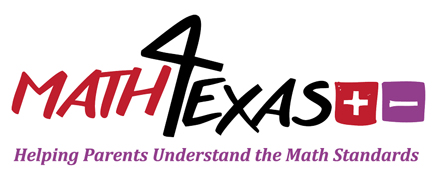In Third Grade
-
Students in third grade solved and represented one- and two-step problems involving addition and subtraction within 1,000 using pictorial models, number lines, and equations, and solved and represented one- and to-step problems involving multiplication and division within 100 using arrays, strip diagrams, and equations.
Students also multiplied a two-digit number by a one-digit number, recalled multiplication facts up to 10 by 10 with automaticity along with the corresponding division facts.
In third grade, students also used compatible numbers to round numbers to the nearest 10 or 100, and used paired numbers in a table.
In Fourth Grade
-
Fourth grade students represent and solve addition and subtraction of fractions with equal denominators, add and subtract whole numbers and decimals, multiply and divide with fluency one- and two-step problems, and represent multi-step problems involving the four operations. Students also use compatible numbers to round to the nearest 10, 100, or 1,000.Multiplication includes multiplying four-digit number by a one-digit number and two-digit number by a two-digit number. Division includes a four-digit number dividend by a one-digit divisor.
In Fifth Grade
-
Fifth grade students will add and subtract positive rational numbers, estimate problems involving addition, subtraction, multiplication, and division, and recognize the differences between additive and multiplicative patterns in a table or graph. Students will also represent and solve problems involving fractions, decimals, and whole numbers within the four operations.Multiplication at fifth grade involves multiplying three-digit by a two-digit number, decimals to the hundredths, and fractions with area models.Division at fifth grade involves dividing whole numbers by a unit fraction, four-digit dividend and two-digit whole number divisors.







